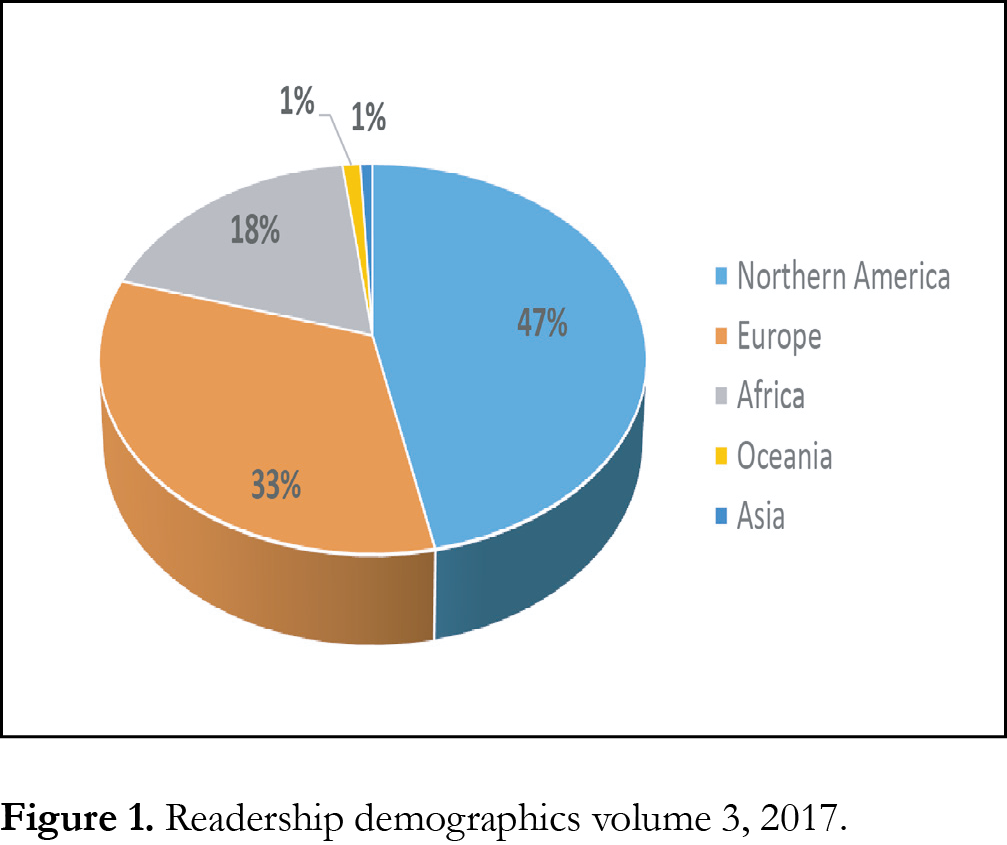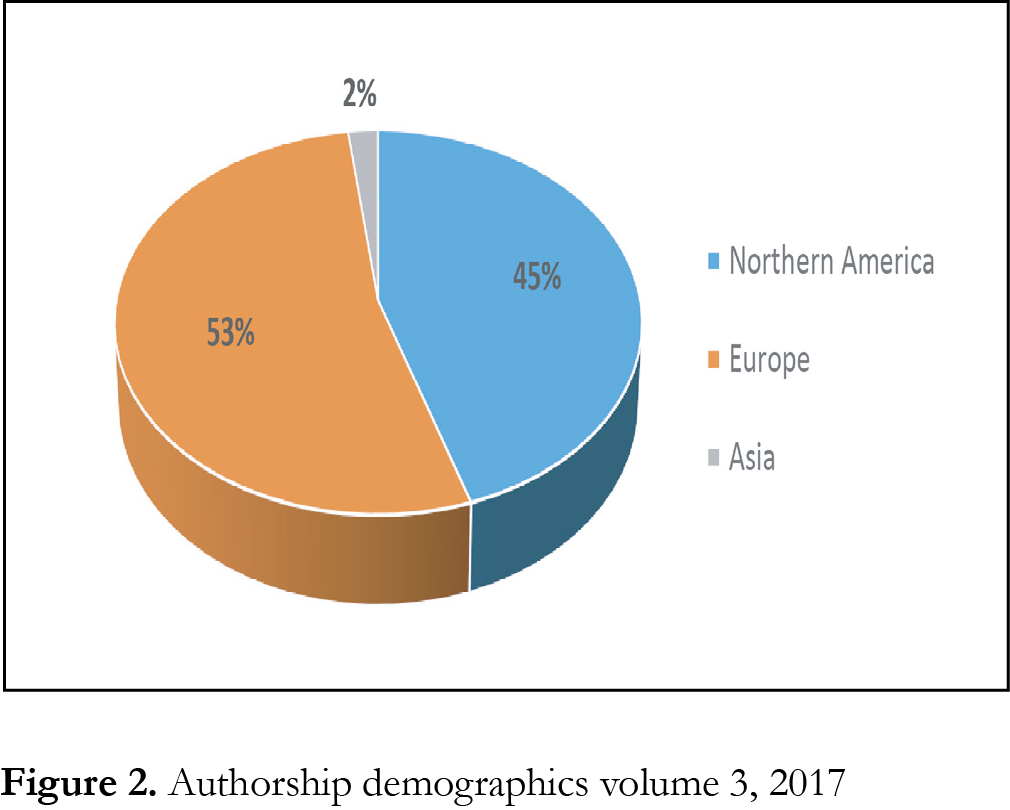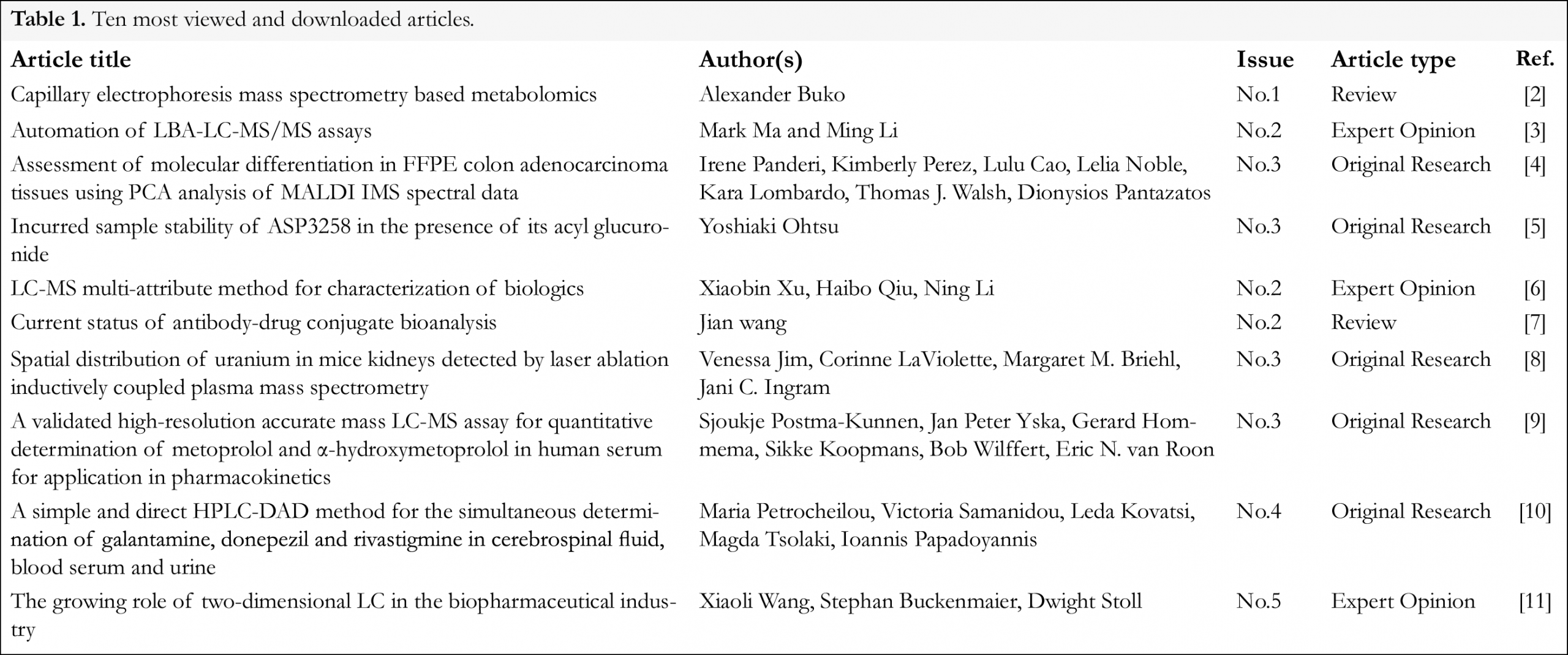OPEN-ACCESS PEER-REVIEWED
FOREWORD
Roland J.W. Meesters1,2,†
1MLM Medical Labs GmbH, 41066 Mönchengladbach, Germany. 2Universidad de los Andes, Department of Chemistry, Bogotá D.C., Colombia.
Journal of Applied Bioanalysis. Vol.4. No.1. pages 1-4 (2018)
Published 15 January 2018. https://doi.org/10.17145/jab.18.001 | (ISSN 2405-710X)
Correspondence: Meesters RJ. †Present address: MLM Medical Labs GmbH, Dohrweg 63, 41066 Mönchengladbach, Germany. Phone: +31 (0)681585826
Citation:
Meesters RJ. Welcome to the fourth volume of the Journal of Applied Bioanalysis. J Appl Bioanal 4(1), 1-4 (2018).
Open-access and Copyright: ©2018 Meesters RJ. This article is an open access article distributed under the terms of the Creative Commons Attribution License (CC-BY) which permits any use, distribution, and reproduction in any medium, provided the original author(s) and source are credited.
Funding/Manuscript writing assistance: The author has no financial support or funding to report and also declares that no writing assistance was utilized in the production of this article.
Competing interest: The author has declared that no competing interest exists.
Article history: Received: 16 December 2017, Revised 18 December 2017, Accepted 24 December 2017.
Keywords
Bioanalysis, journal of applied bioanalysis, bioanalytical chemistry, research.
Welcome to the fourth volume of the Journal of Applied Bioanalysis. Just like last year, I like to start with taking the opportunity to wish all readers a Happy New Year and I hope that 2018 holds success and good fortune in any endeavor you pursue in the new year ahead of you. A special thank you is going out to all our authors, readers and reviewers, as well as to all the Editorial Board members for their continued support. In this article, I’ll take the opportunity to look back on the past year.
Highlights 2017
Betasciencepress Publishing, the publisher of Journal of Applied Bioanalysis supports initiatives for making science and scientific information freely available on the world wide web. Therefore, the corporation initiated the collaboration with ScienceOpen Inc.[1]. All articles are freely available on the special Journal of Applied Bioanalysis website on the ScienceOpen.com network. In the past year, the journal received more than 12000 articles views as well as many articles were shared via the platform by social media at the time of writing this article (December 2017).
Figures and Tables
[Click to enlarge]
Number of issues
In 2017, five issues presenting a variety of articles in areas such as therapeutic drug monitoring, sample preparation, metabolomics, proteomics and other bioanalytical techniques were published online. Among the published articles were respectively, editorial, expert opinion, original and review articles. The details of the ten most viewed articles from the journal’s the third volume are presented in Table 1.
Special focus issues
In 2017 two special focused issues were published. In April, a special issue on the Bioanalysis of mAbs and ADCs was published (Vol.3, No.2). The special focused issue aimed to highlight current applications and developments in the field of the bioanalysis of monoclonal antibodies and antibody-drug conjugates. The guest editor was Dr. Jian Wang (BMS, Princeton, NJ, USA). The second special focused issue was published in the month of June. The Vol.3 No.4 issue was a special congress issue presenting articles from the 22nd Panhellenic Conference in Chemistry held on 2-4 December 2016 in Thessaloniki, Greece. Special issue editors were Prof. dr. Victoria Samanidou (Aristotle University of Thessaloniki, Greece) and Prof. dr. Andreas Tsakalof (University of Thessaly, Greece).
Bioanalytical chemistry in the scientific community
The aim of the Journal of Applied Bioanalysis is to ensure that high-quality articles describing recent developments and applications from the bioanalysis community are freely available to everybody within but also outside of the bioanalysis community. Keeping these high-quality articles behind journal’s paywalls is not good and is not an answer on the demand of the scientific community to the demand on scientific knowledge in this field, especially when the research reported is funded by public or governmental funding. Our editors frequently attend relevant congresses around the globe for keeping up-to-date on the latest developments and advances in this fast-evolving field of analytical chemistry.
We welcome unsolicited manuscript submissions through the online Scholastica®-manuscript submission and article tracking platform [12] and we invite authors to contact our editorial team or the editor-in-chief with suggestions, ideas, and proposals for articles or special focused issue subjects.
Demographics of readers and authors
The Journal of Applied Bioanalysis has developed in the few years of its existence a great diverse reader audience around the globe. Scientists from approx. 100 different countries around the world viewed, read and/or downloaded articles published in not only the third volume but also the first two volumes at the journal’s homepage [13] or the ScienceOpen network. The majority of journal’s homepage visits and article downloads came from visitors located in the Americas (32.8 %) and Europe (46.5%) while also internet traffic from other continents around the globe was observed (Figure 1). The journal receives article contributions from across the globe, the authorship demographics for the third volume are presented in Figure 2.
The journal’s presence on social media
The journal and its editorial board understand the importance of social media has for achieving a strong presence in the bioanalytical community. Social media platforms are a great tool to inform the reader audience as well authors, announce news related to the journal and at last but not least to reach out to readers interested in bioanalytical chemistry and open access publishing. The journal’s activities on the social media can be found on platforms like LinkedIn (Journal of Applied Bioanalysis group) [14], Twitter (@JABeditor) [15], Google+ [16] and on Facebook [17]. On these different social media sites, the journal provides its followers with the latest journal updates, news or other interesting information related to bioanalysis.
Science blog zone
Recently, the Science Blog Zone [18] was launched for presenting the bioanalysis community with the latest articles, news, and developments from the bioanalysis field. The Science Blog Zone has been developed to provide the scientific community with a platform to discuss recent developments within the bioanalysis community as well for discussions related to this exciting field. Membership is free of charge. In 2018 more effort will be put in the development of the Science Blog Zone for becoming a serious player in the world of blogging platforms within the field of bioanalytical chemistry for academia and the industry.
Conclusion
I like to thank the dedicated support of all editorial board members, authors, peer-reviewers and last but not least all readers and thank them with the knowledge that without them the Journal of Applied Bioanalysis would not have been possible. I appreciate every feedback that the journal has received on the quality and direction of the journal and I look forward not only to receive more feedback in the year to come but also I am also looking forward to work with all of you again in the new year 2018.
References
1. www.scienceopen.com
2. Buko AM. Capillary Electrophoresis Mass Spectrometry Based Metabolomics J Appl Bioanal 3(1), 5-20 (2017). [CrossRef]
3. Ma M and Li M. Automation of LBA-LC-MS/MS assays. J Appl Bioanal 3(2), 31-33 (2017). [CrossRef]
4. Panderi I, Perez K, Cao L, Noble L, Lombardo K, Walsh TJ, Pantazatos D. Assessment of molecular differentiation in FFPE colon adenocarcinoma tissues using PCA analysis of MALDI IMS spectral data. J Appl Bioanal 3(4), 81-97 (2017). [CrossRef]
5. Ohtsu Y. Incurred sample stability of ASP3258 in the presence of its acyl glucuronide. J Appl Bioanal 3(3), 3442 (2017). [CrossRef]
6. Xu X, Qiu H, Li N. LC-MS multi-attribute method for characterization of biologics. J Appl Bioanal 3(1), 21-25 (2017). [CrossRef]
7. Wang J. Current status of antibody-drug conjugate bioanalysis. J Appl Bioanal 3(2), 26-30 (2017). [CrossRef]
8. Jim V, LaViolette C, Briehl MM, Ingram JC. Spatial Distribution of Uranium in Mice Kidneys Detected by Laser Ablation Inductively Coupled Plasma Mass Spectrometry. J Appl Bioanal 3(3), 43-48 (2017). [CrossRef]
9. Postma-Kunnen S, Yska JP, Gerard Hommema G, Koopmans S, Wilffert B, van Roon EN. A validated high-resolution accurate mass LC-MS assay for quantitative determination of metoprolol and α-hydroxymetoprolol in human serum for application in pharmacokinetics. J Appl Bioanal 3(3), 49-57 (2017). [CrossRef]
10. Petrocheilou M, Samanidou V, Kovatsi L, Tsolaki M, Papadoyannis I. A simple and direct HPLC-DAD method for the simultaneous determination of galantamine, donepezil and rivastigmine in cerebrospinal fluid, blood serum and urine J Appl Bioanal 3(4), 59-69 (2017). [CrossRef]
11. Wang X, Buckenmaier S, Stoll D. The Growing role of two-dimensional LC in the biopharmaceutical industry. J Appl Bioanal 3(5), 120-126 (2017). [CrossRef]
12. Https://jab.scholasticahq.com/
13. Https://betasciencepress.com/index.php/for-authors/journal-of-applied-bioanalysis/issues/2017
14. www.linkedin.com
15. www.twitter.com/JABeditor
16. Https://plus.google.com/u/1/101575665770787138132/posts/p/pub
17. www.facebook.com/JABjournal
18. Https://blog.betasciencepress.com/


